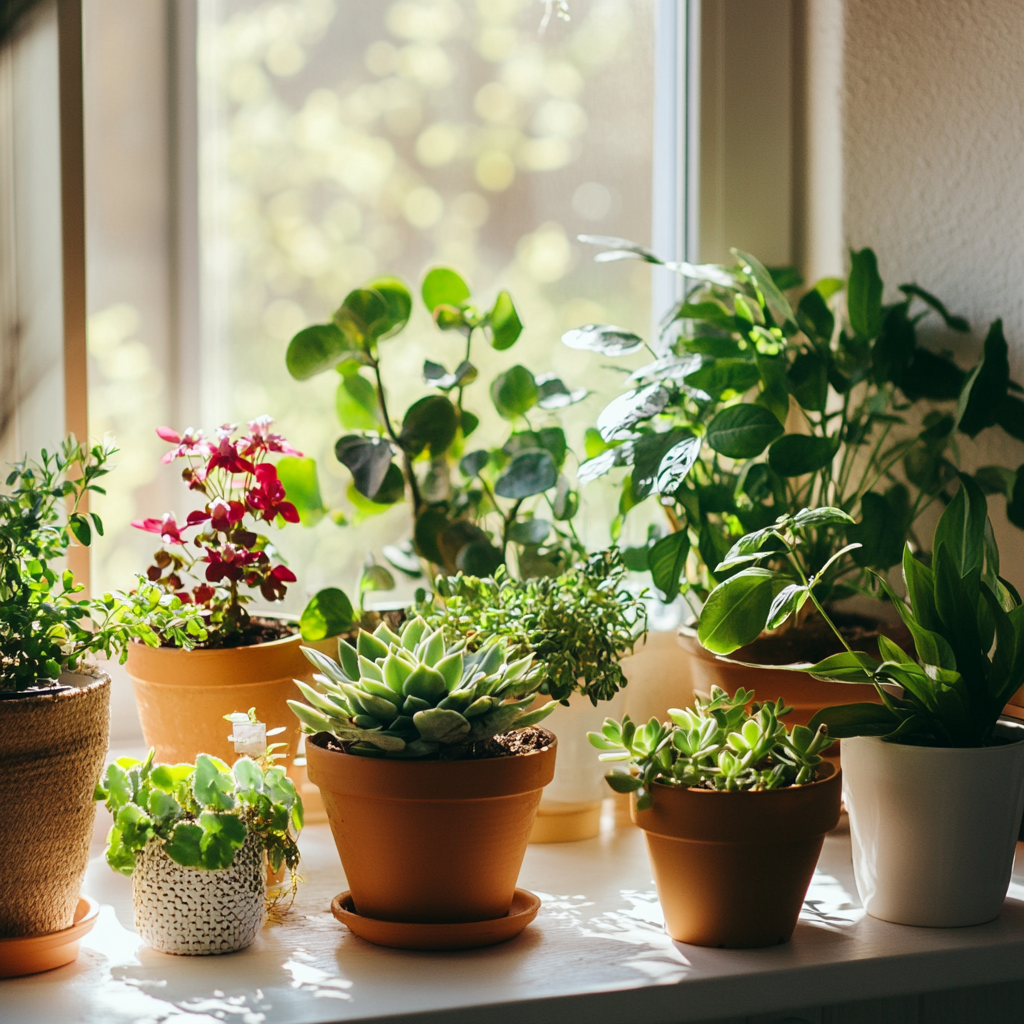Houseplants give a beautiful environment and bring fresh air to our indoor spaces. However, these plants sometimes fall into some uninvited guests like aphids. These small, soft-bodied insects can cause significant harm if left untreated, making it crucial for plant lovers to act promptly. In this guide, we will give you a step-by-step guide for removing aphids from houseplants.

Why Aphids Are a Problem to Houseplants
Aphids are small, pear-shaped insects feeding on plant sap by piercing leaves, stems, and flowers. While they are a common problem with outdoor gardens, they can also infest houseplants, hitching a ride indoors often on new plants or through open windows. These pests reproduce quickly, leading to infestations that can stunt plant growth, cause yellowing leaves, and even kill your houseplants if left unchecked.
Treating them in time will prevent the infestation from causing damage. The following are steps to help identify, remove, and prevent aphids from infesting your plants to keep them healthy and looking their best.
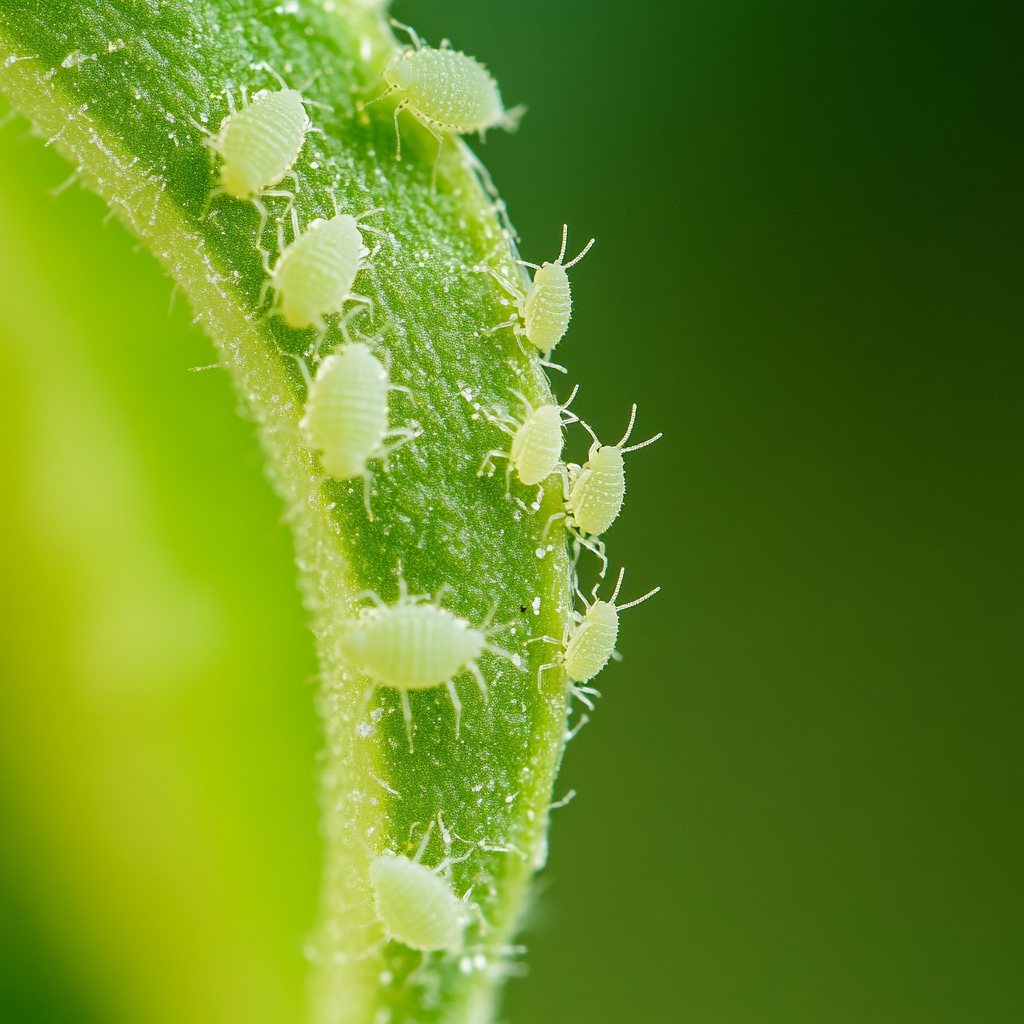
The Way of Identifying Aphids
Aphids are between 1-3 millimeters in length and can be green, black, yellow, or even white. Key indications of an aphid infestation are as follows:
- Yellowing or curling leaves.
- Sticky residue from honeydew that aphids leave on leaves and surrounding surfaces.
- Sooty mold grows on leaves because it lives on honeydew.
- Groups of tiny insects on the bottom of leaves, stems, or buds.
Common Houseplants Affected
Some plants are more prone to infestation by aphids, including:
- Succulent plants, such as jade plants or aloe vera.
- Herbs, basil, and mint.
- Flowering plants, such as hibiscus and begonias.
Early detection is important. Periodically inspect your plants, particularly shortly after introducing new plants or moving them outdoors.
How to Get Rid of Aphids: A Step-by-Step Guide
Step 1: Manual Removal Methods
Manual methods are usually the first line of defense. These methods are simple, not harmful, and quite efficient for small-scale infestations.
- Water Spray: Spray water with force but gently on leaves and stems to dislodge aphids. Ensure that you reach the underside of leaves, where they often hide.
- Handpicking: If the infestation is minor, manually remove the aphids with gloved hands. Place them in a soapy water bowl.
- Wipe Leaves: Wipe off affected areas using a damp cloth or cotton swab dipped in a mild soap solution.
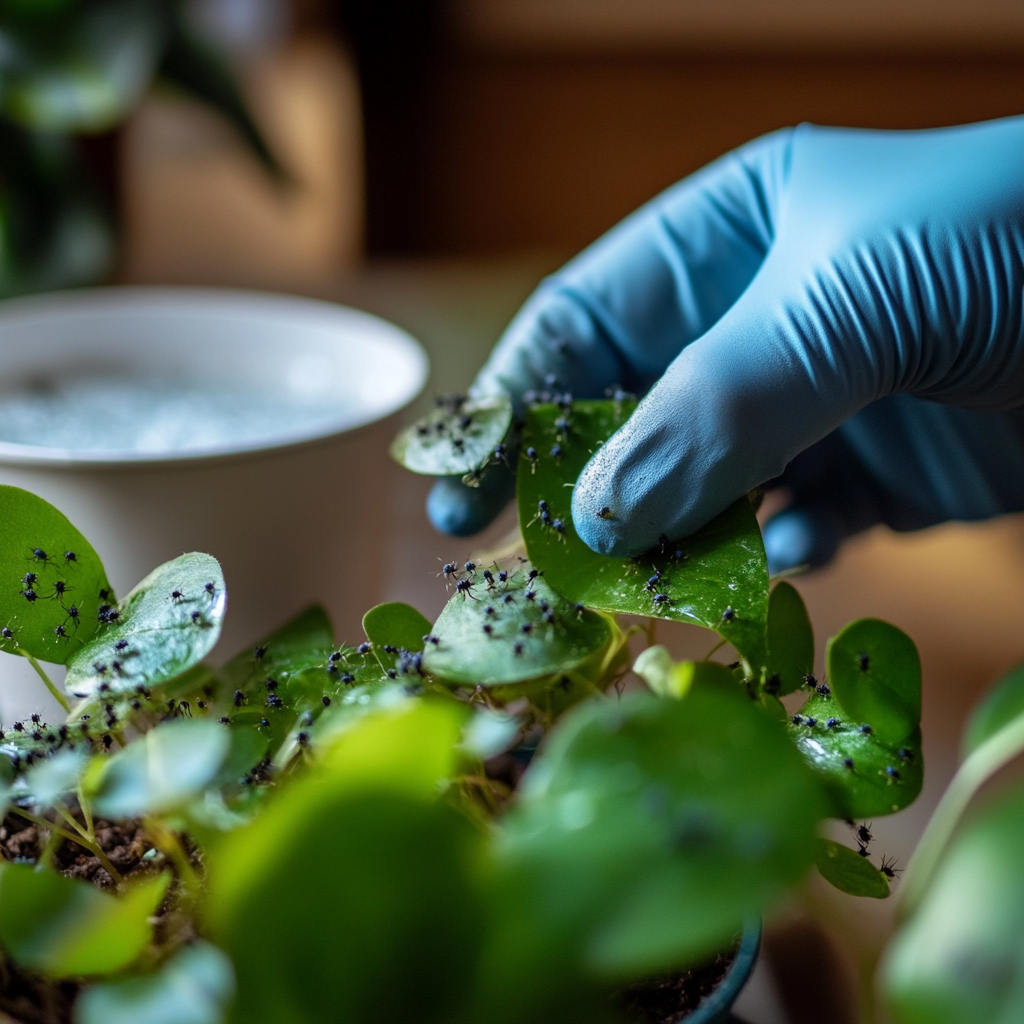
Step 2: Homemade Natural Remedies
Natural remedies are inexpensive and environmentally harmless to take care of the aphids.
- Soap Spray:
- Mix 1-2 teaspoons of mild dish soap with 1 quart of water.
- Spray the solution directly onto the affected areas, making sure to spray the undersides of leaves.
- After a few hours, rinse the plant with water to avoid building up soapy residue.
- Neem Oil:
- Use neem oil in a diluted form in accord with the packaging instructions and spray on affected plants.
- Neem oil disrupts the reproduction cycles of aphids and avoids further infection.
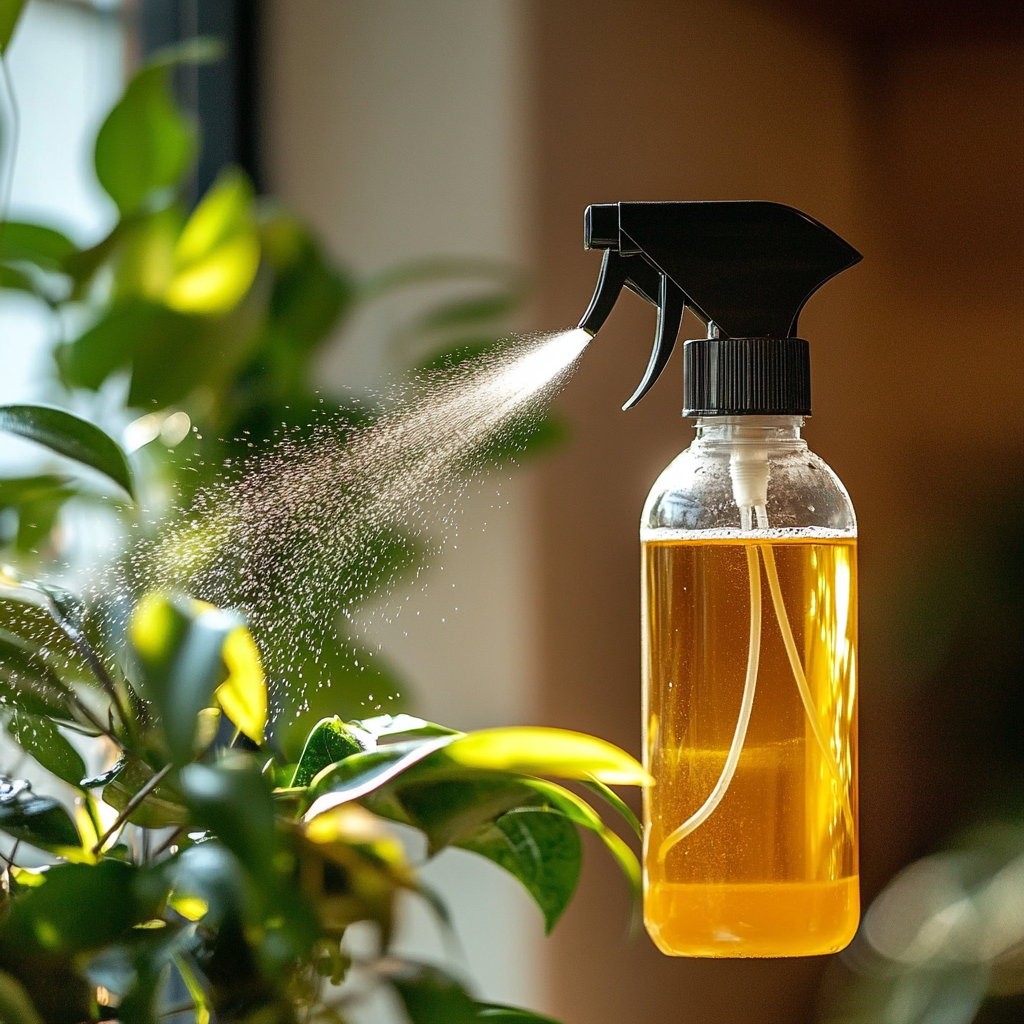
Step 3: Biological Control Options
To control aphids naturally, one should introduce beneficial insects.
- Ladybugs and lacewings: Both these insects naturally prey on aphids. More common in outdoor gardens, they can be used indoors provided one takes good care of them.
- Parasitic wasps: Although not quite practical for indoor use, these tiny wasps are very effective aphid predators in greenhouses.
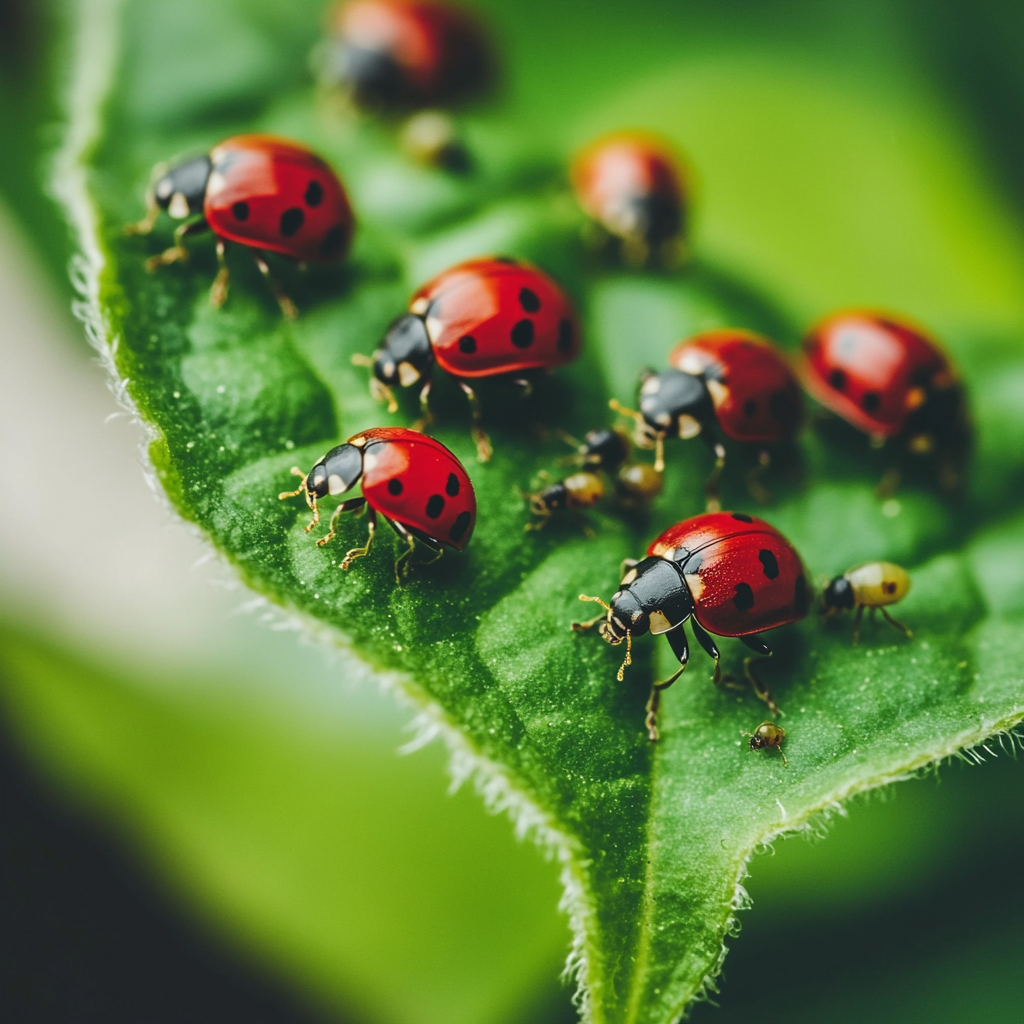
Step 4: Cleaning and Quarantine
After the treatment is done, clean your plant and its surroundings to avoid future problems.
- Isolation of Infested Plants: Keep the infested plant away from other houseplants during the treatment period.
- Cleaning of Plant Surfaces: Clean leaves and other surfaces with soapy water to remove honeydew and residual aphids.
Step 5: Regular Maintenance and Monitoring
- Regular Care: Check on your plants every week for early detection of aphids.
- Healthy Practices: Plants should be kept healthy by proper watering, adequate sunlight, and proper fertilization to enhance their natural resistance against pests.
Step 6: Chemical Control
When the infestation is severe and cannot be handled manually or through natural methods, chemical insecticides can be used. Some commonly used insecticides for aphids and their application are as follows:
- Imidacloprid: A systemic insecticide absorbed by the plant, effective against aphids feeding on the sap of the plant. Provides long-lasting protection but should be used sparingly. Apply as a soil drench or spray; follow the instructions on the product label.
- Pyrethrin-based sprays: Extracted from chrysanthemum flowers, these natural insecticides are generally safe for most houseplants and act to paralyze aphids upon contact. Use as a foliar spray on the infested areas.
- Insecticidal Soap: Specifically developed for plants and applied as a spray directly onto aphids. This will break down cell membranes and lead to dehydration.
- Neem Oil Insecticides: Apply according to the label instructions directly on plants that are infested with aphids.
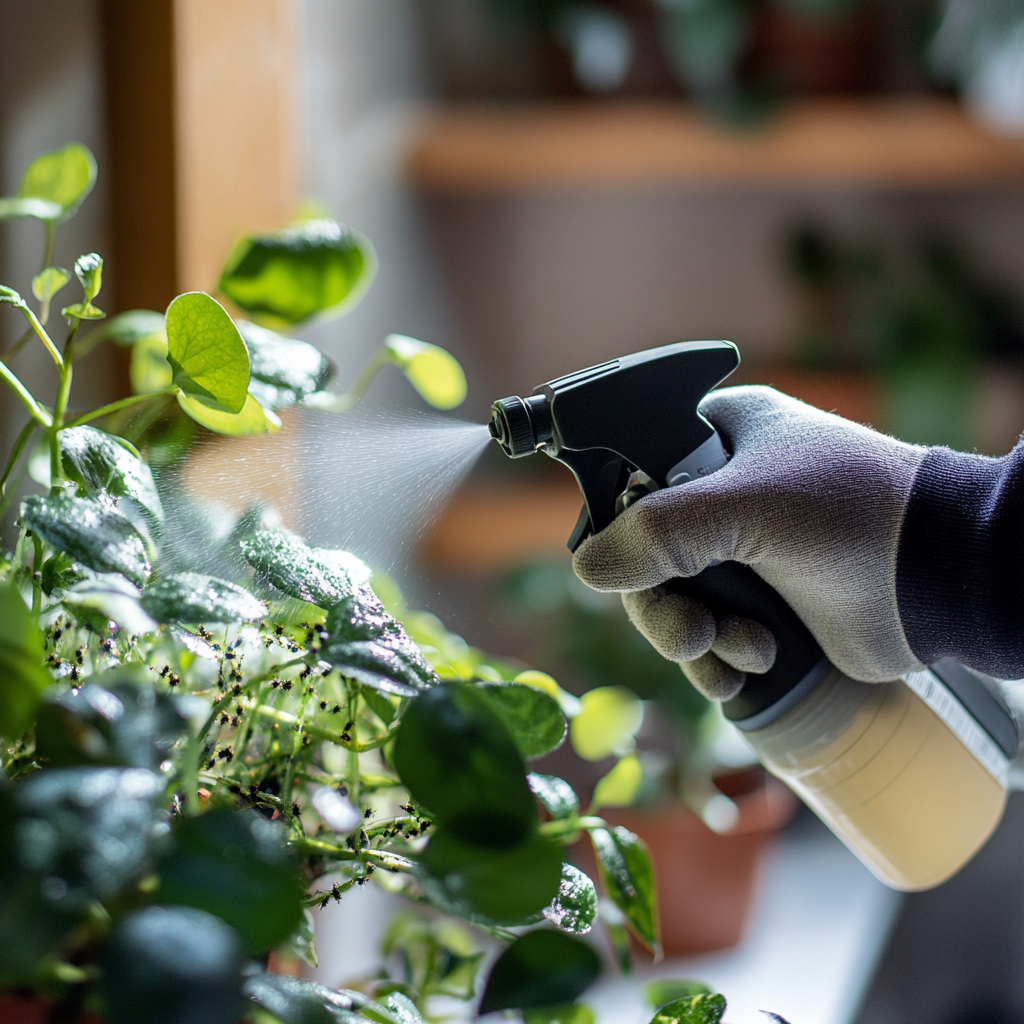
Important Notes in Applying Insecticides:
- The manufacturer’s instructions regarding dosage and application shall always be observed.
- Perform a test of the insecticide on a small portion of the plant for possible damage.
- Insecticides should not be applied near food and in places where pets and children are present.
- Apply chemical insecticides only when necessary, weighing effectiveness against environmental impact.
When Removing Aphids
- Act Quickly: The moment one notices the appearance of aphids, one should act.
- Test Remedies: Always test any homemade or chemical spray on a small part of the plant for any potential damage.
- Inspect New Plants: New plants should always be checked for aphids before bringing them among your indoor collection.
What Not to Do
- Overwater Plants: Overwatering weakens plants, inviting aphids.
- Ignore Under Leaves: Most of the time, aphids hide on the undersides of leaves—don’t neglect this area when making your checks.
- Overuse Chemicals: Excessive use of insecticides may harm your plants and the indoor environment.
How to Avoid Aphid Infestation in the Future
- Keep Plants Healthy
A healthy, robust plant is less susceptible to the attack of aphids. Provide your houseplants with the right amount of water, light, and nutrients. Do not over-fertilize because it encourages soft new growth, which attracts aphids. - Regular Inspections
This habit alone allows the houseplants to be checked on a weekly basis, thus saving your plant from an infestation of dire prospects. - Employ Natural Deterrents
- Companion Planting: Some plants, garlic or marigolds, would repel them if placed in close proximity.
- Essential Oils: Spray undiluted essential oils around plants, such as peppermint or eucalyptus, as a deterrent.
- Make Physical Barriers
The best bet is to cover any open windows and vents with very fine mesh or netting to help keep the aphids at bay.
These minute insects, if their infestation is not checked in time, may cause serious damage to your houseplants. Follow the step-by-step guide to remove aphids and restore your plants to health. Regular care, timely action, and a proactive approach will help you maintain an indoor garden that is always healthy and pest-free.
